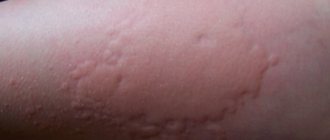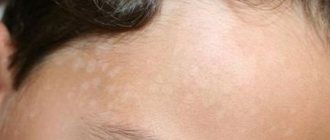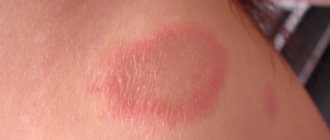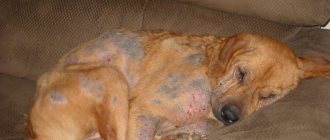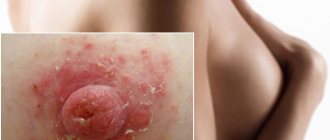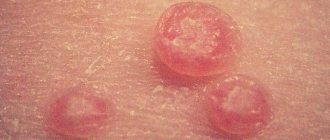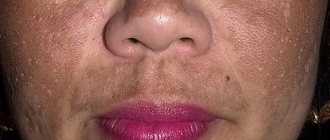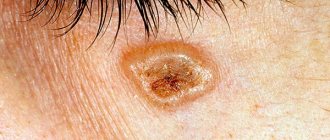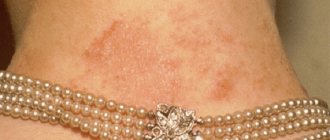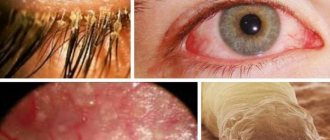Groups of antibacterial drugs
Depending on the type and severity of the disease, antibiotics with different active ingredients are selected. There are several groups of antibacterial drugs used for such skin pathologies:
- Penicillins. With their content, drugs such as injections, solutions, ointments for external use (Penicillin, Ecmonovocillin, Doxycycline) are used.
- Cephalosporins. Available in tablets (Cefalexin, Cefixime), injections (Kefzol, Cefoxitin).
- Macrolides. Some of the safest antimicrobial drugs that doctors allow pregnant women to take. Contained in Azithromycin, Erythromycin, etc.
- Aminoglycosides (Gentamicin, Kanamycin). Toxic, but have a wider spectrum of action.
- Tetracyclines (Doxycycline, Tetracycline). Preparations in this group are produced both for internal use and externally in the form of ointments and emulsions.
This list is not exhaustive; antibiotics are divided into many groups. These are just the main ones that experts most often prescribe. They have a less destructive effect on the body, coping with pathological microorganisms, and also helping to quickly cure the effects of lichen.
These drugs have many contraindications (kidney, liver, gastrointestinal diseases and others). Antibiotics are used with caution in children (especially infants), pregnant women, and during breastfeeding. Therefore, you can take any antibiotics only with the permission of your doctor.
Ringworm
A rare disease.
It occurs in a chronic form.
Origin unknown.
It mainly affects the lower abdomen, head of the penis, elbows or knees.
Dense nodules appear in the skin.
They are small in size, with a shiny surface.
Although the elements are located next to each other, they never merge.
The disease can last for several weeks, or maybe several years.
For diagnosis, a skin biopsy is used followed by pathomorphological examination.
Treatment is with topical corticosteroids.
Symptoms
If you look at the external manifestations of lichen, there is no question why it was given such a name. The rash appears on the body in the form of small rings that can cause discomfort.
There are 2 forms of lichen annulare:
- In its acute form, the rash affects the skin in a small area. The inflammations are bright red or pink. With active treatment, the nodules heal quickly, and the problem does not bother the person in the future.
- In case of a chronic disease, lichen can last up to several months or even years. The seals are dark brown. Periods of remission alternate with acute inflammatory processes.
The main symptoms that this disease provokes are:
- in the evening or morning itching appears on damaged skin;
- the epidermis thickens with the formation of edema;
- the surface of the skin becomes rough;
- lesions protrude above the surface of the skin and have compactions in the form of “discs” of different sizes;
- the outer part of the inflammation is covered with a dense crust.
IMPORTANT! Exacerbation of the disease occurs in autumn and spring.
The chronic type of disease is characterized by the following manifestations:
- with constant friction, seals appear on the surface of the skin, which become inflamed and become covered with a rough layer;
- with this disease there are no more than 3 lesions on the skin;
- the middle part of the inflammation is flattened;
- the smallest papules are located along the edges of the ring-shaped formation;
- around inflammation, the skin may constantly change color.
Pityriasis rosea on the penis
The disease has an unknown origin.
It develops mainly in young adults or teenagers.
The disease is acute.
Recovery occurs on its own, a few weeks after the appearance of the rash.
The pathology is characterized by autumn-spring seasonality.
Among the subjective symptoms, itching dominates.
Of four people:
- one has severe itching;
- in two people – moderate;
- another one is completely missing.
In 80% of cases of the disease, one large maternal plaque initially appears, and then other elements of the rash appear along the periphery.
This plaque measures up to 5 cm in diameter.
There is peeling in its center.
The plaque is surrounded by a pink corolla.
Hence the name of the disease.
In some patients, several such plaques are detected on the body at once.
Secondary elements of the rash are papules.
They can also appear on the penis.
Although the main localization is the abdomen and limbs.
The rash associated with pityriasis rosea is characterized by an arrangement in the form of spruce branches.
They appear on lines of skin stretch, friction or pressure.
Atypical clinical forms of pityriasis rosea:
- absence of maternal plaque, presence of only secondary rashes;
- several maternal plaques;
- the rash may not be papules, but blisters, including those with bloody contents, spots or pustules (pustules).
Diagnostics
The basis of diagnosis is a skin biopsy.
Parakeratosis, minor signs of acanthosis, and spongiosis are noted in the epidermis.
There is no granular layer.
Signs of dyskeratosis are detected.
In the dermis, the doctor sees swelling, homogeneous collagen fibers, and lymphocytic infiltration.
However, a biopsy is not always prescribed.
A doctor can make a diagnosis based on the clinical signs of the disease alone.
In most patients they last no more than 6 weeks.
If this period has passed, and there are still symptoms of pityriasis rosea on the penis, the doctor will prescribe a skin biopsy.
Because in this case he must carry out differential diagnosis with other diseases:
- parapsoriasis;
- guttate psoriasis;
- chronic migratory erythema.
Treatment
The disease goes away on its own.
Accordingly, treatment, if required, is exclusively symptomatic.
Antihistamines are used to reduce itching.
Light therapy can be used for the same purpose.
An alternative may be sunbathing (if the climate and time of year permit).
Going to a solarium can alleviate a person’s condition.
Pityriasis versicolor on the penis
This is a fungal ringworm on the penis.
It is caused by Pityrosporum ovale.
This microorganism is part of the normal microflora of the skin.
That is, a person does not become infected with this fungus and is not contagious if the disease develops.
Because it is present on everyone's skin, but only in some it causes clinical symptoms of pityriasis versicolor.
This happens for the following reasons:
- sweating;
- hot climate;
- sports or physical labor;
- seborrhea;
- applying fat to the skin;
- increased production of cortisol;
- treatment with glucocorticoids for a long time.
Pityrosporum ovale is a lipophilic fungus.
It feeds on fatty acids.
Therefore, with a large amount of sebum, it begins to multiply too intensively.
The male penis is one of those areas where a large number of sebaceous glands are located.
Fungus can appear here if:
- the sebaceous glands are hypertrophied (this happens either in youth or in men with high levels of androgens);
- sebum is not removed from the surface of the penis in a timely manner (insufficient hygiene).
The disease is not severe.
But if no measures are taken to eliminate pityriasis versicolor, complications are possible.
The most common of them are fungal folliculitis and seborrheic dermatitis.
With pityriasis versicolor, spots appear on the penis.
They have clear boundaries and a reddish color.
In dark-skinned people, the spots may be lighter than the surrounding skin.
When the stain is scraped, slight peeling is noted.
After the disease is cured, the spots remain without peeling.
Usually the spotted elements have the correct shape - round or oval.
Not only the penis is affected, but also other organs with increased sebum production.
Often such spots appear on the back, in the groin area.
They may increase over time.
Diagnostics
A skin scraping is performed and examined microscopically.
The scales are examined by staining with a solution of potassium hydroxide.
In the preparation, filaments of pseudomycelium and round fungal cells are visualized.
When examined under a Wood's lamp, pityriasis versicolor spots on the penis have a green glow.
But it is noticeable only if the person did not wash before visiting the dermatologist.
If he just got out of the shower, then there will be no glow.
If necessary, a pathological examination of the skin is performed.
Fungal cells are detected in the epidermis.
Hyperproliferation of keratinocytes and signs of chronic inflammation are detected.
The vessels are dilated.
But in most cases, a skin biopsy is not done.
To confirm the diagnosis, a medical examination and microscopy results are sufficient.
Treatment
Local therapy involves the use of the following drugs:
- selenium sulfide;
- aqueous solution of propylene glycol;
- ketoconazole;
- antifungal creams (miconazole, clotrimazole and others).
Rarely there is a need for general treatment.
It is required when fungal folliculitis develops against the background of pityriasis versicolor of the penis.
In this case, the following drugs are used:
- ketoconazole;
- itraconazole
In people with oily skin, the disease often recurs.
Prevention is recommended for them.
To do this, the skin is lubricated with salicylic acid.
Soaps containing zinc pyrithione, ketoconazole, or selenium sulfide may be used.
Among women
Ringworm can affect the skin area of the vulva. In this case, clusters of lesions are often observed in areas of the labia. The rash is also sometimes localized in the groin area.
At the site of the lesions occurs:
- swelling of the skin;
- rash character, which depends on the type of lichen;
- itching sensation;
- pain during sexual intercourse and urination;
- dryness and flaking.
With lichen sclerosus, bleeding in the area of the lesions, coarsening and thickening of the mucosal tissues can be observed.
Ringworm in the genital area is treatable in both men and women.
To speed up the recovery process and increase the effectiveness of therapeutic actions, you should contact a medical center for help at the first signs of the disease.
Timely diagnosis of skin pathology on the genital organs will help to correctly prescribe treatment and reduce the risk of complications. All medications are prescribed by the attending physician.
To treat or not to treat?
Lichen annulare Vidal must be treated. Therapy includes medications and traditional medicine. Independent use of external agents depends on the characteristics of the disease. Complex therapy, including medications and traditional medicine methods, is selected by a specialist.
Popular external creams and ointments contain components that are active against lichen. With regular use, positive dynamics are observed after 2-4 applications. Under the influence of the ointment, the lesions become less pronounced, their area is significantly reduced. Effective ointments against lichen:
- Zinc ointment;
- Fenistil;
- Dimetinden.
Treatment using traditional methods takes a long period, but the effect of improvised means is more gentle. Tar is used for medicinal purposes for Vidal's lichen. The product has anti-inflammatory, antiseptic and wound-healing properties. In combination with butter, tar intensively moisturizes the skin, preventing flaking.
Treatment is prescribed exclusively by a specialist. Independent choice of medicine is prohibited. A treatment plan is drawn up after all the necessary tests have been completed.
Despite the fact that ringworm is not considered a dangerous disease, experts recommend taking preventive measures to prevent the development of the disease. It is necessary to avoid stressful situations, lead a healthy lifestyle and completely give up nicotine and alcohol.
